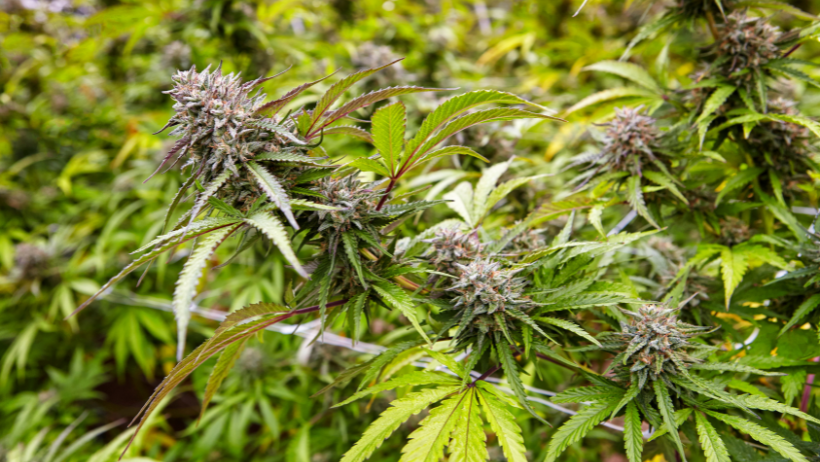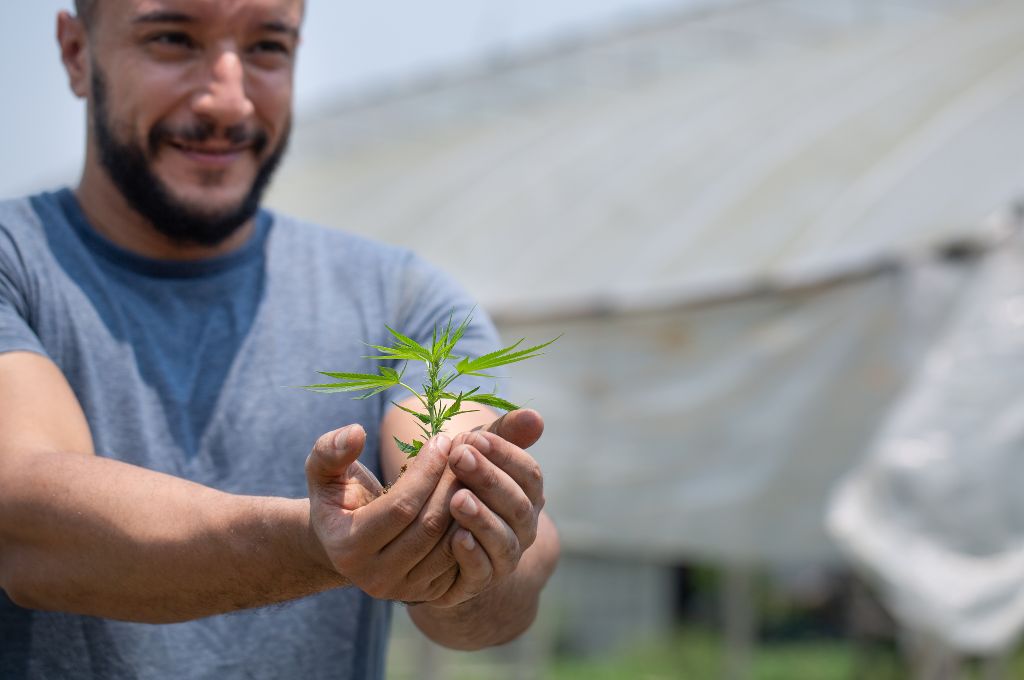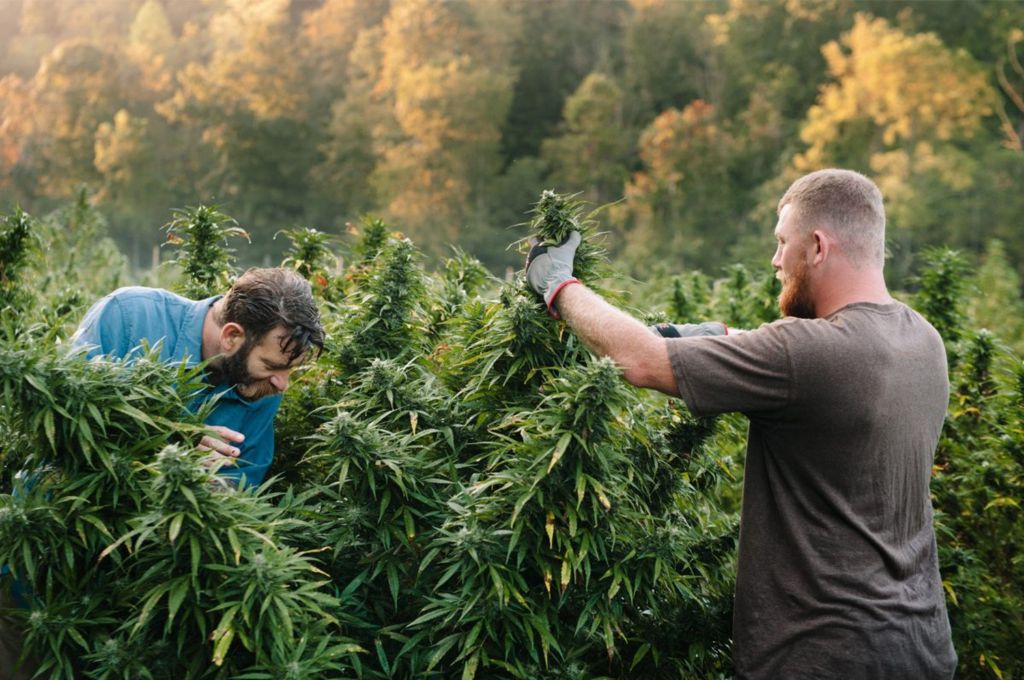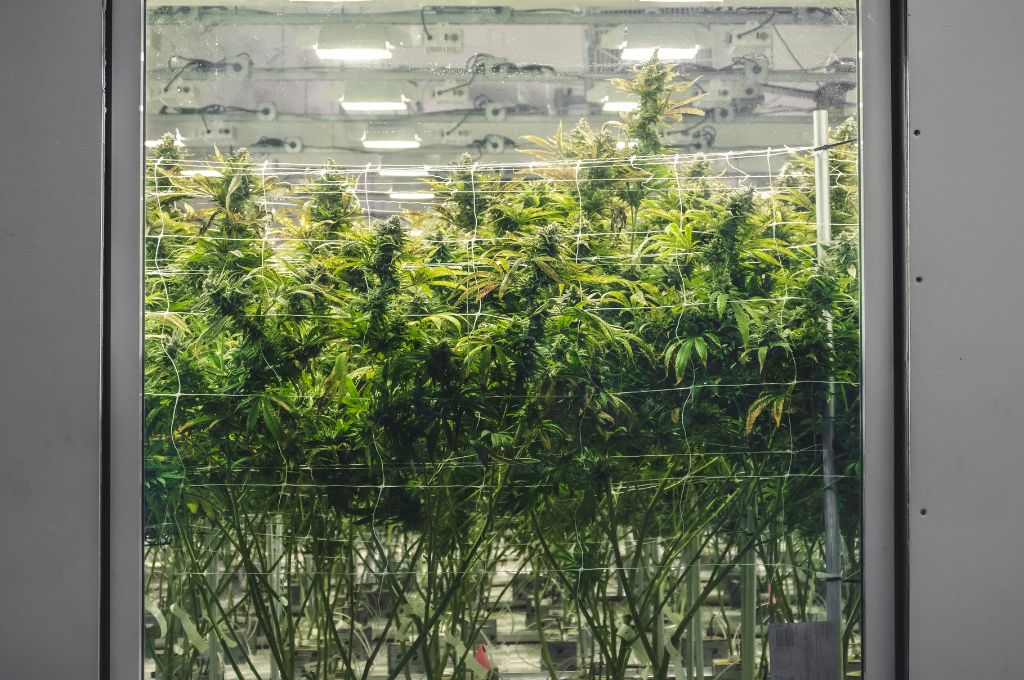Key Takeaways:
- Fundamental knowledge of strain selection, germination, soil and planting, and environmental controls is essential for successful cannabis cultivation.
- Recognizing and avoiding common cultivation errors, such as overwatering and nutrient imbalances, is crucial for plant health and yield optimization.
- Implementing advanced strategies, including tailored nutrient management and exploring hydroponics, can significantly improve the quality and quantity of the harvest.
- Success in cannabis cultivation comes from ongoing education, experimentation, and adaptation to new methods and insights.
Cannabis cultivation has evolved into a sophisticated practice, blending ancient traditions with modern science to produce a wide range of strains, each with unique effects and medical benefits.
For beginners, understanding the basics of growing cannabis is essential, not just for achieving a successful harvest but also for appreciating the complexities of this versatile plant.
From selecting the right strain to mastering the nuances of care and harvesting, foundational knowledge empowers enthusiasts to navigate the challenges of cultivation. It’s not always an easy path to take, but it can be exceptionally worthwhile and rewarding.

Preparing for Cannabis Cultivation
Cannabis cultivation combines art and science, offering enthusiasts a pathway to engage deeply with the plant. Proper preparation is critical for success, whether for personal use or exploration of the plant’s medicinal properties.
This section explores the foundational steps for preparing to grow cannabis, emphasizing legal considerations, strain selection, and setting up your growing space.
Legal Considerations
Before beginning your cannabis cultivation journey, understanding and adhering to local laws and regulations is paramount. Cannabis laws vary significantly across regions, with specific guidelines on cultivation limits, possession, and usage.
Ensuring compliance with these laws not only protects you legally but also fosters responsible cultivation practices within the cannabis community.
Selecting Your Cannabis Strain
Choosing the right cannabis strain is a crucial step that influences your growing experience and the outcomes you can expect. Strains can be broadly categorized into Indica, Sativa, and Hybrids, each offering distinct effects, growth patterns, and care requirements [1].
- Indica strains are known for their relaxing and sedative effects, making them suitable for evening use.
- Sativa strains, conversely, tend to provide uplifting and energizing effects, ideal for daytime activities.
- Hybrids combine characteristics from both Indica and Sativa parents, offering a balance between relaxation and stimulation.
For beginners, selecting a strain that is forgiving and easy to grow can lead to a more rewarding experience. Some recommended strains for novices include Blue Dream, Northern Lights, Granddaddy Purple, Sour Diesel, Jack Herer, and Durban Poison.
These strains are recognized for their ease of cultivation, resilience, and pleasant effects, catering to various preferences and purposes.
Setting Up Your Growing Space
Choosing between indoor and outdoor cultivation is a decision that affects the control you have over the growing environment, potential yield, and the overall complexity of the cultivation process.
- Indoor Cultivation allows for year-round growing and greater control over environmental conditions such as light, temperature, and humidity. Essential equipment includes grow tents or dedicated rooms, proper lighting (LEDs, HPS, or fluorescents), ventilation systems (fans and carbon filters), and climate control devices to maintain optimal growth conditions.
- Outdoor Cultivation relies on natural sunlight and environmental conditions, which can be less predictable but more cost-effective and environmentally friendly. The success of outdoor grows heavily depends on the climate, seasonality, and choosing strains suited to your local environment.
Whether you opt for indoor or outdoor cultivation, investing time in setting up your growing space properly is key to nurturing healthy plants and achieving a bountiful harvest.
This includes selecting the right location, ensuring adequate lighting and ventilation, and choosing the best soil or hydroponic systems for your chosen strains.
The Basics of Growing Cannabis

Growing cannabis successfully requires a strong foundation in the basics of plant care and environmental management [2].
This segment covers the essential steps from seed germination to the importance of soil, planting techniques, and the critical aspects of lighting and environmental control to help you get a better idea of what you need to do in order to grow cannabis successfully.
Germinating Your Seeds
Germination is the first step in your cannabis cultivation journey, where seeds sprout and begin to grow. Make sure you always pick high-quality cannabis seeds for the best results. Proper germination is crucial for a healthy start.
Popular methods include:
- Directly into the Medium: Planting seeds directly into your chosen growing medium, ensuring they’re not too deep for the sprouts to reach the surface.
- Paper Towel Method: Seeds are placed between moist paper towels and kept warm until they sprout, offering a simple way to monitor progress.
- Jiffies, Plugs, or Rock Wool Starters: These provide a controlled environment for each seed, promoting uniform germination.
- Soaking in Water: Some growers prefer soaking seeds in water for 12-24 hours to expedite germination, suitable for older or harder seeds.
- Germination Stations: Specialized equipment that maintains optimal conditions for germination, ideal for meticulous cultivators.
Regardless of the method, ensure your seeds have access to moisture, warmth, and darkness to trigger the germination process. Growing a marijuana plant doesn’t have to be daunting, and even the greenest gardeners can get the hang of it.
Soil and Planting
Selecting the right soil is pivotal for cannabis cultivation, as it serves as the primary nutrient source for your plants. Healthy plant growth is everything, and it all begins with the soil and planting – whether growing cannabis outdoors or indoors.
- Growing Medium Options: Besides traditional soil, soilless mediums like coco coir, vermiculite, or hydroponic systems can be used. Each has its advantages, from nutrient control in hydroponics to the natural buffering of soil.
- Soil Preparation: For soil growers, enriching the medium with composted manure can boost nutrient content. Ensure the soil has good drainage and aeration qualities to foster healthy root development.
When planting your germinated seeds:
- Depth: Plant seeds about a quarter-inch to a half-inch deep in the soil or medium.
- Orientation: The sprout (or taproot) should point downward to facilitate natural growth.
- Spacing: Give plants enough space to grow without overcrowding, considering the mature size of the strain you’re growing.
Lighting and Environment
Light is a critical factor in cannabis growth, influencing plant health, yield, and potency. If you have decided against outdoor growing, your weed plants are going to need plenty of artificial light in order to thrive and survive.
- Indoor Lighting Setups: For indoor cultivation, LED, High-Pressure Sodium (HPS), and fluorescent lights are common choices. LEDs are energy-efficient and produce less heat, while HPS lights are known for promoting flower growth.
- Light Schedules: Cannabis plants require different light schedules during vegetative and flowering stages. Generally, 18 hours of light and 6 hours of darkness are recommended for the vegetative phase, shifting to 12 hours of light and 12 hours of darkness to induce flowering.
Temperature and humidity control are equally important:
- Temperature: Ideal growing temperatures range between 70°F and 85°F (21°C to 29°C) during the light period and slightly cooler at night.
- Humidity: Young plants thrive in higher humidity (60-70%), which should be gradually reduced to around 40-50% during the flowering stage to prevent mold and fungal diseases.
Proper ventilation and air circulation help stabilize these conditions, ensuring your cannabis plants develop robustly and healthily. By mastering these basics, you’ll create a strong foundation for your cannabis plants to thrive, leading to a successful and rewarding cultivation experience.
Caring for Your Cannabis Plants

Proper care and maintenance of cannabis plants are pivotal to achieving a successful harvest. This encompasses regular and appropriate watering, nutrient management, and employing techniques like pruning and training to maximize yield and plant health.
Watering and Nutrients
The frequency and amount of watering your cannabis plants require depend on various factors, including the growth stage, soil composition, and environmental conditions. Overwatering or underwatering can lead to issues like root rot or stunted growth.
- Watering Frequency: As a general rule, allow the top inch of the soil to dry out before watering again. This frequency will vary based on the size of the plant, pot size, and ambient temperature.
- Nutrient Needs: Cannabis plants require a balanced diet of essential nutrients, including nitrogen (N), phosphorus (P), and potassium (K), often referred to as NPK, along with calcium, magnesium, and sulfur. The ratio of these nutrients should be adjusted based on the plant’s stage of growth, with higher nitrogen during vegetative growth and more phosphorus and potassium during flowering.
Soil pH is critical for nutrient uptake. A slightly acidic pH between 5.8 and 6.3 is optimal for cannabis plants to absorb nutrients efficiently.
Utilizing a mix of organic matter such as compost, perlite, coco coir, and vermiculite can enhance soil structure, ensuring good drainage and aeration while maintaining moisture and nutrient availability.
Organic nutrients provide a slow-release form of fertilization beneficial for long-term plant health, whereas mineral nutrients offer a quicker absorption rate, suitable for addressing immediate deficiencies or for use in hydroponic setups.
Pruning and Training
Pruning and training cannabis plants are techniques used to improve yield and manage plant growth effectively. Marijuana plants need a lot of love, especially through indoor growing, and this means paying extra attention to pruning.
- Pruning: Involves the selective removal of unnecessary or inefficient parts of the plant, such as lower branches that receive less light or dead leaves that could harbor pests and diseases. Pruning should be done cautiously to avoid stressing the plant, typically before the flowering stage to allow the plant to recover and direct energy to bud production.
- Training Techniques: Techniques like Low-Stress Training (LST), Screen of Green (ScrOG), and Sea of Green (SOG) manipulate the plant’s shape and expose more of the canopy to light, encouraging an even distribution of growth and maximizing yield potential. LST involves gently bending and tying down branches to spread out the plant, while ScrOG and SOG utilize screens and spacing to optimize light exposure and plant density.
Effective pruning and training require a careful, strategic approach to not overly stress the plants. Start early in the vegetative stage for training, and be mindful of the timing and extent of pruning to ensure plants have enough time to recover and flourish.
It’s amazing how easy training your weed plants can be, and while it might seem like a strange concept you can end up with much better strains, yields, and quality as a result. Don’t be afraid to experiment a little and find out what works for you.
Common Mistakes and Troubleshooting
Cultivating cannabis is a rewarding endeavor that requires attention to detail and an understanding of the plant’s needs. One wrong move can ruin everything for you and your grow space.
Despite the best preparations, cultivators might encounter challenges that can impact plant health and yield. Recognizing common mistakes and knowing how to troubleshoot them is crucial for a successful harvest.
Overwatering and Underwatering
- Overwatering leads to symptoms such as drooping leaves, a heavy, waterlogged substrate, and root rot. To prevent overwatering, ensure your soil has good drainage and allow the top inch of soil to dry out before watering again.
- Underwatering presents as dry, crispy leaves and stunted growth. The solution is to establish a consistent watering schedule that keeps the soil evenly moist but not saturated, adjusting for environmental factors like temperature and humidity.
Nutrient Deficiencies and Toxicities
- Deficiencies in essential nutrients (Nitrogen, Phosphorus, Potassium, etc.) manifest as discoloration, yellowing leaves, or stunted growth. Address deficiencies by ensuring your feeding schedule meets the plant’s growth stage needs and adjusting pH levels to improve nutrient uptake [3].
- Toxicities occur when plants are overfed with nutrients, leading to “nutrient burn,” evident by dark, curled, or burnt-looking leaf tips. The solution is to flush the soil with pH-balanced water and to reduce nutrient concentrations in future feedings.
Pest and Disease Management
- Prevention is key to managing pests and diseases. Maintain cleanliness in your grow area, use proper ventilation to reduce humidity, and inspect your plants regularly for early signs of infestation or infection.
- Treatment involves identifying the specific pest or disease and applying targeted interventions. Organic pesticides, neem oil, and biological controls can manage pests, while fungicides and proper pruning practices help control diseases.
To avoid common mistakes such as bad organization, neglecting seed quality, and inadequate climate control, cultivators should focus on thorough planning, selecting high-quality seeds, investing in the right soil, and maintaining optimal growing conditions.
Regularly monitoring plants for signs of overwatering, nutrient imbalances, and pest/disease presence allows for timely interventions, enhancing the overall success and health of your cannabis cultivation.
Harvesting and Curing
Harvesting and curing are critical phases in cannabis cultivation, directly influencing the quality, potency, and flavor of your final product. Understanding when to harvest and how to properly cure your cannabis can significantly enhance the overall experience.
Knowing When to Harvest
Identifying the optimal time to harvest your cannabis is essential for maximizing its potential. Key indicators include:
- Trichome Appearance: Trichomes are the resin glands on the cannabis plant that contain THC. When most trichomes shift from clear to a milky white color, and some begin to turn amber, it’s generally time to harvest.
- Pistil Changes: Observing the color of the pistils, or hair-like strands, on your buds can also guide you. When around 70-90% of the pistils have darkened and curled, it indicates maturity.
- Leaf Changes: As the plant reaches maturity, the leaves near the buds will begin to yellow and fade, signifying that the plant is focusing its energy on flower production.
These signs collectively help determine the perfect harvesting time, which can vary based on strain and desired effects.
Harvesting Techniques
Proper harvesting techniques ensure that your plants are processed efficiently and gently to preserve their quality:
- Cutting: Use sharp, clean scissors or pruning shears to cut the branches or the main stem. This method helps manage the plant more easily during the trimming process.
- Trimming: You can opt for wet trimming (trimming the buds while the plant is fresh) or dry trimming (after the buds have dried). Each method has its advantages, with wet trimming allowing for a more uniform appearance and dry trimming being less sticky and perhaps more gentle on the buds.
- Handling with Care: Throughout the harvesting process, handle your buds gently to avoid damaging the trichomes and compromising the potency and flavor.
Drying and Curing Cannabis
Drying and curing are vital steps for developing the full aromatic profile and potency of your cannabis.
- Drying: Hang the cut branches upside down in a controlled environment — cool, dark, with good air circulation — for about 7-14 days. The goal is to remove moisture slowly without drying too quickly, which can harm the bud quality.
- Curing: Once dried, trim (if you haven’t already) and place the buds in airtight containers, like mason jars, and store them in a cool, dark place. Open the containers several times a day during the first week for a few minutes to allow fresh air in and excess moisture to escape, a process known as “burping.”
- Duration: Continue to cure your buds for at least two to four weeks, though longer curing times can further enhance the smoothness and flavor.
Why Should You Cure Cannabis Buds?
Curing cannabis buds is a critical post-harvest process that enhances the quality, potency, and flavor of the final product. Through slow, controlled drying, curing allows for the breakdown of chlorophyll and the preservation of desirable cannabinoids and terpenes.
This process not only improves the smoothness and taste of the cannabis but also increases its shelf life, preventing mold and bacterial growth.
Advanced Tips and Techniques

For those looking to elevate their cannabis cultivation practice, understanding advanced growing techniques and principles can significantly impact the quality and yield of your harvest.
This section explores sophisticated nutrient management, the benefits of hydroponics and other soilless mediums, and the basics of breeding and genetics.
Advanced Nutrient Management
Effective nutrient management goes beyond basic NPK (nitrogen, phosphorus, potassium) requirements, involving a tailored approach to each growth stage and recognizing signs of nutrient deficiencies or excesses.
- Customizing Nutrient Schedules: Develop a feeding schedule that aligns with your plant’s growth stages — vegetative, flowering, and late flowering. Each stage has distinct nutrient needs, with increased phosphorus and potassium during flowering for bud development, and reduced nitrogen.
- Identifying Deficiencies and Toxicities: Vigilant monitoring of leaf symptoms can guide adjustments in nutrient applications. For instance, nitrogen deficiency often presents as yellowing leaves, whereas phosphorus deficiency can cause dark, bluish-green leaves and poor bud development. Correction involves supplementing with specific, nutrient-rich fertilizers or adjusting the pH to improve nutrient availability.
Hydroponics and Other Growing Mediums
Exploring soilless cultivation methods such as hydroponics, aeroponics, and aquaponics offers several advantages over traditional soil-based growing.
- Hydroponics: Involves growing plants in a nutrient-rich water solution, offering faster growth rates and yields due to direct nutrient uptake. Hydroponic systems require careful water and nutrient management to prevent issues like root rot or nutrient imbalances.
- Other Soilless Mediums: Coco coir, perlite, and vermiculite are popular alternatives that provide excellent aeration and moisture retention. These mediums support robust root development and can be used in conjunction with hydroponic systems for even greater control over the growing environment.
Breeding and Genetics
Creating your own cannabis strains through breeding allows for customization of plant characteristics, such as potency, flavor profile, and growth habit.
- Basics of Breeding: Start with selecting parent plants that exhibit desirable traits. Through controlled pollination, you can combine these traits, potentially creating a unique phenotype of cannabis.
- Phenotype Selection: The process involves growing several offspring plants, evaluating their characteristics, and selecting the ones that best meet your criteria. This selection process may take several generations to stabilize desired traits.
- Genetic Considerations: Understanding basic genetics and inheritance patterns can improve your breeding outcomes. It’s also important to consider the genetic diversity and vigor of hybrid strains compared to their inbred counterparts.
Mastering advanced cultivation techniques like nutrient management, hydroponic growing, and cannabis breeding can transform your growing experience, leading to unparalleled quality and yields.
These methods demand dedication and a willingness to learn, but the rewards in terms of crop improvement and personal achievement are substantial.
Frequently Asked Questions
What Should a Cannabis Plant Look Like at Two Weeks?
At two weeks, a cannabis plant should be in its seedling stage, featuring a few sets of true leaves beyond the initial cotyledons (seed leaves). The plant will be small, typically 2-4 inches tall, with leaves that are starting to show the characteristic cannabis shape. Proper care during this time is crucial for establishing a healthy root system and plant structure.
What Should Buds Look Like at Five Weeks?
At five weeks, during the flowering stage, cannabis buds are beginning to form and develop. They should appear as small clusters around the nodes of the plant, with white pistils or hairs that will later catch pollen in nature. The buds will be visibly forming but not yet at their full size or potency.
When Do Cannabis Buds Turn Purple?
Cannabis buds can turn purple due to genetics or cooler temperatures during the flowering stage. Some strains have naturally occurring anthocyanins that give the plant purple hues under the right conditions, typically when night temperatures are lower (around 10-15 degrees cooler than day temperatures) towards the end of the flowering stage.
Do Cannabis Buds Grow More at Night?
Cannabis plants, like many others, undergo most of their growth during the night. This process is part of the plant’s natural photoperiodism, where darkness stimulates hormonal changes that promote growth. Hence, buds can indeed show significant development overnight, reflecting the plant’s response to its light-dark cycle.
Are Cannabis Seeds Legal?
The legality of cannabis seeds varies by jurisdiction. In regions where cannabis is legal for medical or recreational use, purchasing and possessing cannabis seeds typically also falls under legal parameters. However, in areas where cannabis remains illegal, possessing, buying, or selling seeds might be prohibited.
Do Cannabis Plants Grow Faster Under LED Lights?
Cannabis plants can grow faster under LED lights due to their ability to provide a broad spectrum of light, mimicking the sun’s natural spectrum. LEDs are efficient and can be fine-tuned to the specific light wavelengths needed during different growth stages, potentially accelerating growth and improving photosynthesis efficiency.
Can You Use a Ring Light for Cannabis Plants?
While not ideal, you can use a ring light for young cannabis plants or clones as a temporary light source. However, ring lights typically do not provide the full spectrum or intensity of light required for optimal cannabis growth throughout its lifecycle. For best results, especially during the flowering stage, more specialized grow lights are recommended.
Conclusion
Cultivating cannabis is an intricate blend of art and science, requiring knowledge spanning from basic care to advanced cultivation techniques.
Successful cultivation hinges on understanding strain selection, soil preparation, environmental control, and recognizing common cultivation errors. Embracing advanced strategies like custom nutrient schedules and hydroponics can further enhance yields and quality.
Regardless of experience level, continuous learning and adaptation are pivotal, transforming cannabis cultivation into a rewarding journey toward mastering this versatile plant.
Sources:
[1] Muro, A., Cladellas, R. and Judit Castellà (2021). Cannabis and Its Different Strains. Experimental psychology, [online] 68(2), pp.57–66. doi: https://doi.org/10.1027/1618-3169/a000510.
[2] Cleanleaf.com. (2024). The Stages of Cannabis Growth | CleanLeaf Blog. [online] Available at: https://cleanleaf.com/the-stages-of-cannabis-growth.php
[3] Cockson, P., Landis, H., Smith, T., Hicks, K. and Whipker, B.E. (2019). Characterization of Nutrient Disorders of Cannabis sativa. Applied sciences, [online] 9(20), pp.4432–4432. doi: https://doi.org/10.3390/app9204432
